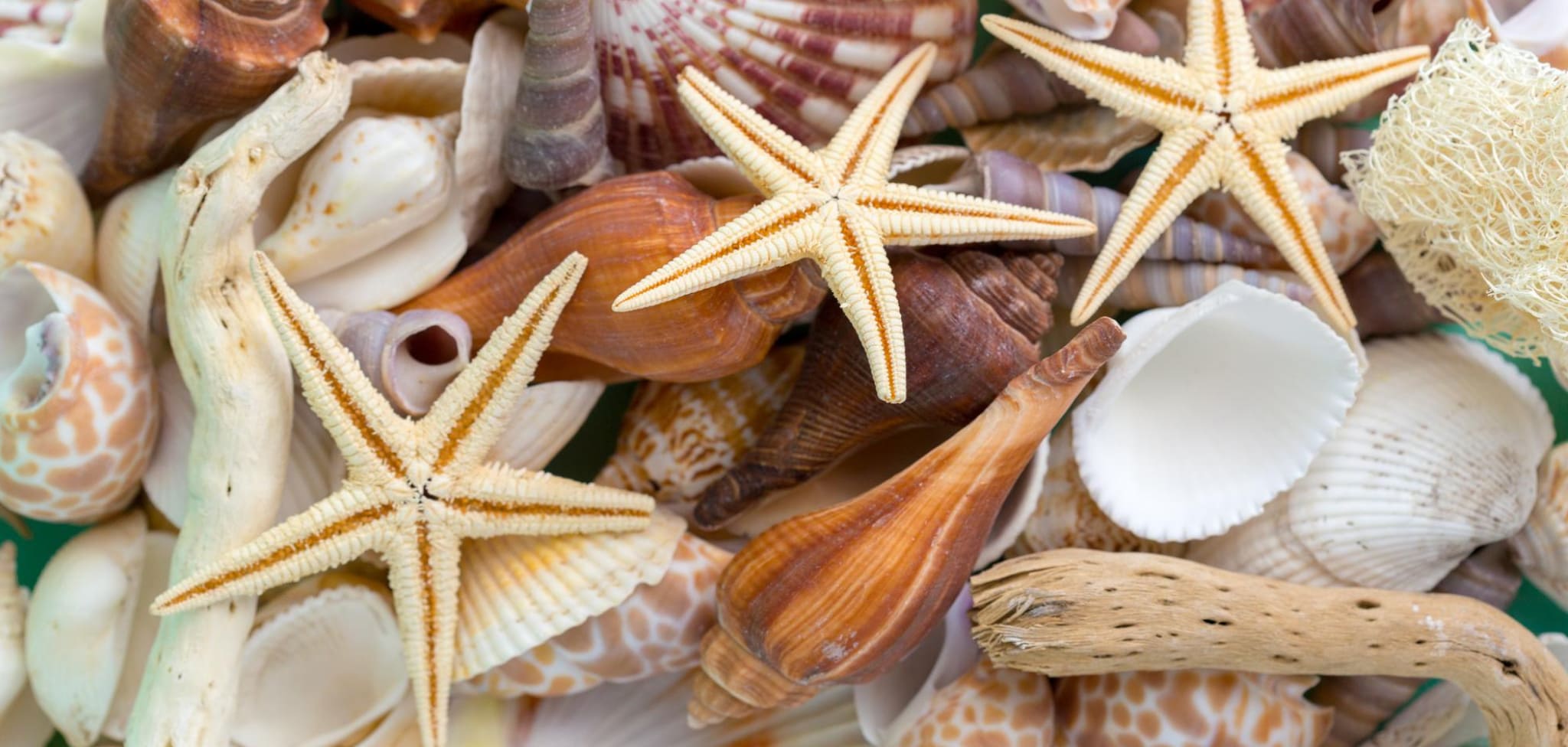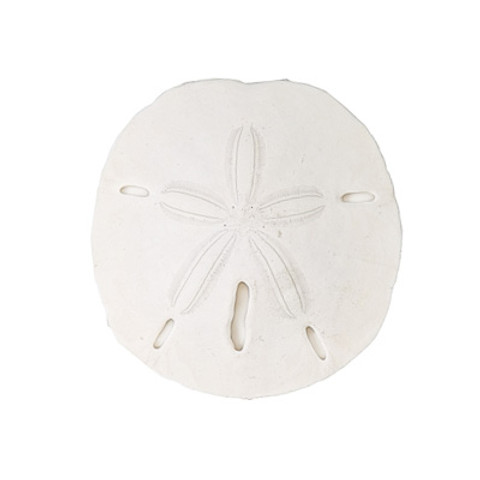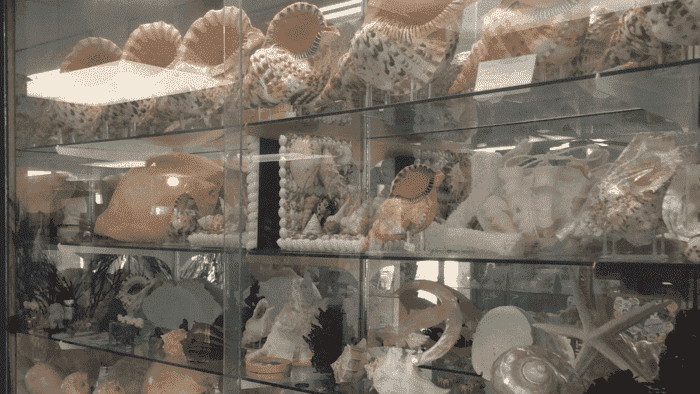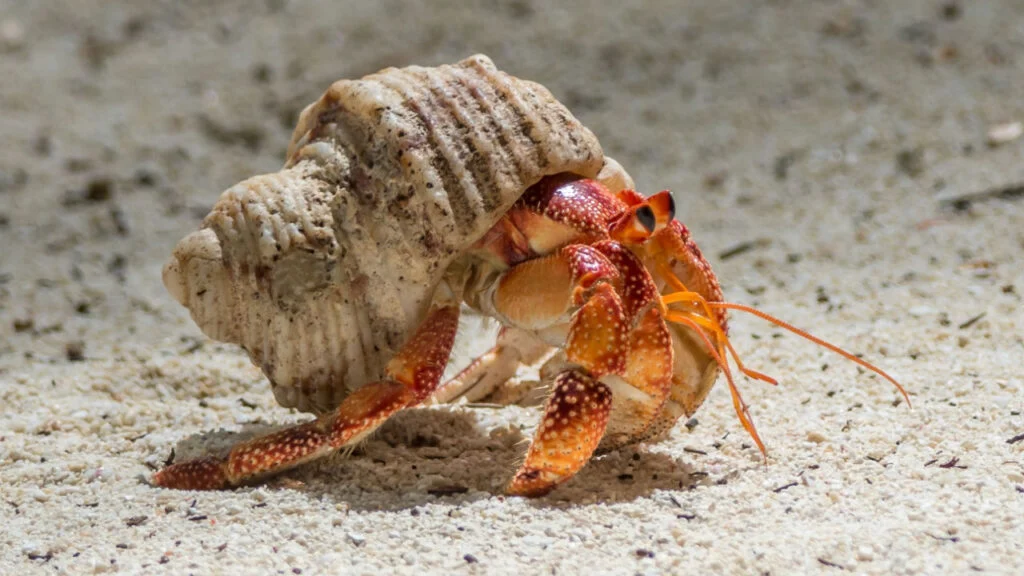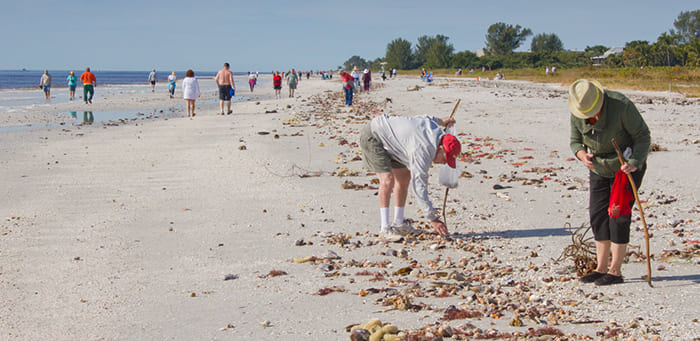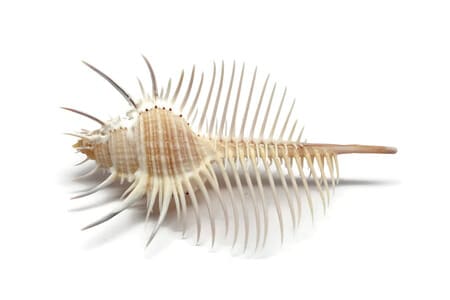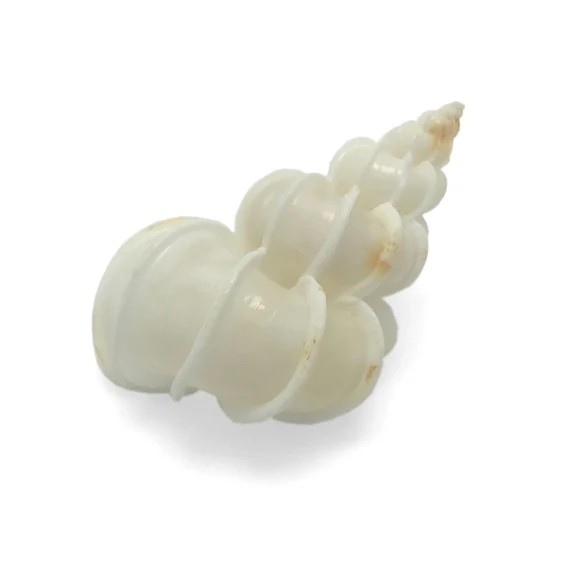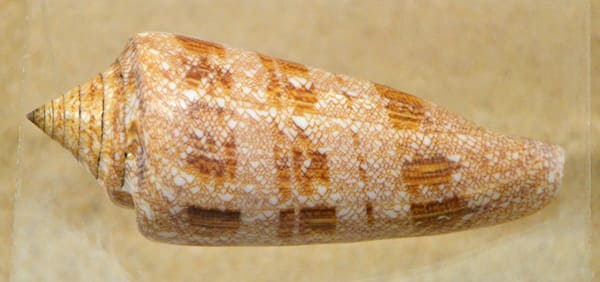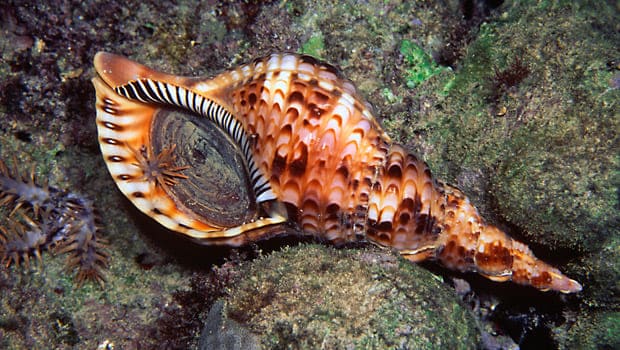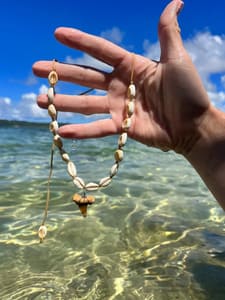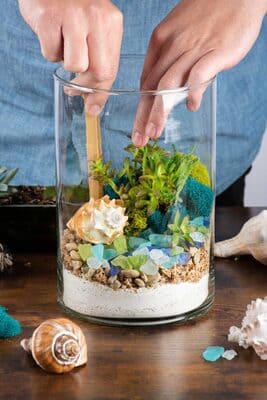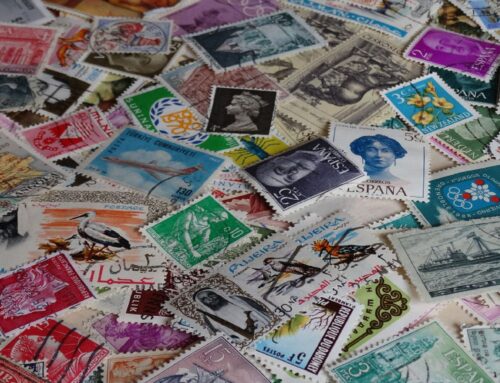A Comprehensive Guide to Starting Your Seashell Collection
Seashell collecting is a fascinating and rewarding hobby that allows you to explore the diverse world of marine life and bring a piece of the beach into your home. Whether you’re a novice collector or an avid enthusiast, this comprehensive guide will provide you with all the information you need to start and grow your seashell collection. From understanding different types of seashells to ethical considerations, we’ll cover it all. So grab your bucket and let’s dive into the world of seashell collecting!
Understanding Seashells
Seashells have captivated the human imagination for centuries with their intricate shapes, stunning colors, and unique patterns. These exoskeletons of mollusks and echinoderms tell the story of the creatures that once inhabited them. They come in various shapes, sizes, and textures, making each one a treasure waiting to be discovered.
The Beauty of Seashells
Seashells are not only visually appealing but also serve as a reminder of the natural world’s diversity. From the delicate spirals of snail shells to the vibrant hues of coral fragments, each seashell has its own story to tell. Collecting seashells allows you to appreciate the intricate beauty of marine life and brings a touch of the beach into your home.
Types of Seashells
Seashells encompass a remarkable variety of forms and functions, each tailored to the needs and lifestyles of the creatures that once inhabited them. Understanding the different types of seashells can deepen our appreciation for the intricacies of marine life.
-
Gastropods (Snails):
- Conch Shell:
These large, spiral-shaped shells are often inhabited by marine snails known as conchs. Conch shells are not only visually captivating with their smooth curves and subtle hues but also have practical uses. They have historically been used as musical instruments, signaling devices, and even as vessels for food, such as conch fritters in Caribbean cuisine. - Cowrie Shell:
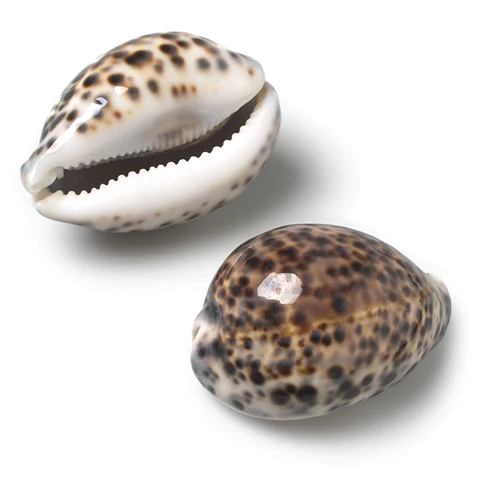
Cowrie shells, which are small, glossy, and egg-shaped, hold a unique place in human history. They were once used as currency, ornaments, and symbols of fertility and protection in various cultures around the world. Their smooth, polished appearance and distinctive shape make them highly sought-after by collectors and artisans. - Murex Shell:
The murex shells are a striking contrast to the smooth cowrie. These shells are characterized by their sharp, spiky protrusions and vivid colors. Historically, they were used to extract a purple dye highly prized in ancient times, making them not only aesthetically intriguing but culturally significant as well.
- Conch Shell:
-
Bivalves (Clams and Mussels):
- Clam Shell:
Bivalve shells, such as those of clams and mussels, are known for their simple yet functional design. These shells consist of two hinged halves that protect the soft-bodied mollusk inside. Their smooth, oval shapes are often found on sandy shores and serve as a testament to the adaptability of these filter-feeding organisms.
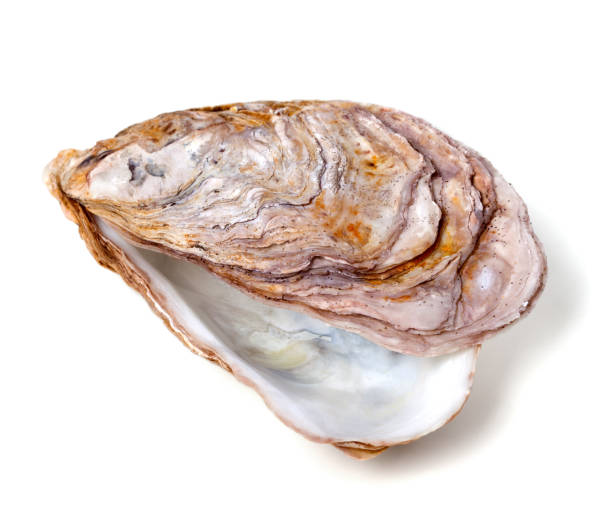
- Oyster Shell:
Oyster shells have a distinct, irregular shape that reflects their filter-feeding lifestyle. Beyond their culinary significance, these shells play essential ecological roles by providing habitat for various marine organisms and stabilizing coastal environments.
- Clam Shell:
-
Cephalopods (Octopuses and Squids):
- Nautilus Shell:
The Nautilus, a living fossil among cephalopods, occupies a unique niche in the ocean’s depths. Its shell, a coiled spiral with a series of chambers, enables buoyancy control. The intricate chambers serve as a fascinating record of the nautilus’s growth and adaptation over time.
- Nautilus Shell:
-
Echinoderms (Starfish and Sand Dollars):
- Sand Dollar:
These flattened, disk-shaped shells possess a mesmerizing pentagonal symmetry. Their skeletons, covered in tiny spines, protect the sand dollar’s soft tissues. Often found along sandy seafloors, these shells are more than just attractive souvenirs; they are vital components of marine ecosystems. - Starfish (Sea Stars):
Although starfish don’t have traditional shells, they are included here for their unique calcified structures known as ossicles, which provide structural support to their bodies. These remarkable creatures exhibit radial symmetry and come in a wide array of shapes, sizes, and colors, further showcasing the diversity of marine life.
- Sand Dollar:
Understanding the nuances and historical significance of each seashell type adds depth to the experience of beachcombing and collecting, allowing enthusiasts to connect with the natural world on a more profound level.
The Science Behind Seashells
To truly appreciate seashells, it helps to understand the science behind their formation. Seashells are primarily composed of calcium carbonate, secreted by the mantle of the mollusk or echinoderm. The intricate patterns and colors on the shell’s surface are created by pigments and other organic materials. By studying seashells, scientists can gain insights into the ecology, evolution, and geological history of marine life.
Getting Started
Before you embark on your seashell collecting journey, it’s essential to equip yourself with the necessary knowledge and tools. This section will guide you through the initial steps of starting your collection.
Educate Yourself
To become a successful seashell collector, it’s crucial to educate yourself about different types of seashells, their characteristics, and the habitats they come from. Investing in a good book like ‘Florida’s Seashells.’ This resource offers rich information and illustrative images about shells. or online resources that provide pictures and information about seashells can be immensely helpful. Familiarize yourself with the terminology used in seashell identification and learn to recognize common species.
Decide on Your Collection Focus
As you begin your seashell collection, you’ll find that there are countless possibilities for organizing and categorizing your shells. Consider what interests you the most. You can choose to focus on a specific type of shell, such as gastropods or bivalves, or narrow it down further to certain species or geographical regions. Another option is to collect shells based on their visual appeal, color patterns, or rarity.
Where to Find Seashells
To find seashells, you’ll need to visit beaches or coastal areas known for their abundance of shells. Research and explore different locations to find the best spots for seashell collecting. Beaches that have experienced storms or high tides are often prime hunting grounds for shells that have been washed ashore. Pay attention to areas where debris accumulates, such as the high tide line, rocks, and driftwood.
Tools and Equipment
When heading out for a seashell collecting expedition, it’s essential to bring along the right tools and equipment. A sturdy bucket or pail will serve as your shell collection vessel, while a mesh bag or plastic container can be useful for smaller specimens. Invest in a good quality shell scoop or sand comb to help sift through the sand and uncover buried treasures. Don’t forget to bring sunscreen, a hat, and comfortable footwear for your beachcombing adventure.
Ethical Considerations
As nature enthusiasts, it’s our responsibility to collect seashells ethically and ensure minimal impact on the environment. This section explores some important ethical considerations to keep in mind when starting your seashell collection.
Collecting Empty Shells
When collecting seashells, it is generally best to focus on finding empty shells that are no longer inhabited by living organisms. Empty shells provide valuable insights into marine life without harming any creatures. Walking along the beach after a storm is an excellent way to find empty shells that have been washed ashore. Be mindful not to disturb or harm any living organisms while beachcombing.
Respect for Living Organisms
It is crucial to respect the lives of the creatures that inhabit seashells. Avoid collecting shells that still have living organisms inside, as this can cause harm and disrupt the natural balance of marine ecosystems. Some shells, such as those belonging to hermit crabs, serve as homes and protection for these animals. By leaving these shells behind, you provide shelter for the creatures that rely on them.
Protecting the Environment
While engaging in seashell collecting, it’s important to be mindful of the environmental impact. Respect any local regulations or restrictions on shell collecting in certain areas. Additionally, do not leave any trash or litter behind on the beach. Take the time to clean up any debris you encounter, helping to preserve the natural beauty of the coastline for future generations.
Exploring the Beach
To become a successful seashell collector, you need to know when and where to search for shells. This section provides valuable tips and techniques for exploring the beach and maximizing your chances of finding beautiful seashells.
Timing and Tides
Timing is key when it comes to beachcombing for seashells. Low tide is generally the best time to search for shells, as the receding water exposes previously submerged areas. Research the tide schedule for your chosen beach and plan your shell collecting expeditions accordingly. Early mornings and late afternoons are often the optimal times to find shells, as the beach is less crowded, and the lighting conditions can enhance shell visibility.
Best Beaches for Seashell Collecting
Not all beaches are created equal when it comes to seashell collecting. Some beaches are known for their abundance of shells and offer a higher chance of finding rare or unique specimens. Research and explore different beaches in your area or consider traveling to renowned seashell collecting destinations. Sanibel Island in Florida, the Outer Banks in North Carolina, and the beaches of the Maldives are just a few examples of popular seashell hunting spots.
Beachcombing Techniques
To effectively search for seashells, develop a keen eye for spotting them among the sand and debris. Look for areas where shells tend to accumulate, such as coves, tidal pools, and areas with rocks or seaweed. Walk slowly along the shoreline, scanning the sand for shells that may be partially buried. Use your hands or a shell scoop to sift through the sand gently, uncovering hidden treasures. Be patient and observant, as some shells may blend in with their surroundings.
Identifying Valuable Shells
As you explore the beach, you’ll come across a variety of seashells, each with its own unique characteristics. Learn to identify valuable shells based on their size, color, shape, and patterns. Familiarize yourself with the distinguishing features of sought-after shells, such as the rare and colorful Conus species or the intricate patterns of the Murex species. Carry a field guide or refer to online resources to assist you in identifying and classifying your finds.
Proper Handling and Cleaning
Proper handling and cleaning techniques are essential for preserving the integrity and beauty of your seashell collection. This section provides guidelines to ensure you handle and clean your shells with care.
Handling Delicate Shells
Some seashells, such as the Precious Wentletrap or the Venus Comb Murex, are incredibly delicate and require gentle handling. These fragile shells can easily break or lose their intricate structures. When handling delicate shells, use caution and avoid applying excessive pressure. If possible, wear gloves to protect both yourself and the shells from any potential damage.
Cleaning Methods
Cleaning seashells is an important step in preparing them for display or storage. However, it’s essential to use gentle cleaning methods that preserve the shells’ natural beauty. Avoid using harsh chemicals or bleach, as these can damage the shells and strip away their colors. Instead, soak the shells in fresh water and gently rinse off any sand or debris. For stubborn dirt or algae, use a soft brush or toothbrush to clean the shells without causing any damage.
Preserving and Displaying Shells
Preserving and displaying your seashell collection allows you to showcase their beauty and share your passion with others. After cleaning, allow the shells to air dry completely before handling or storing them. To preserve the shells’ colors and luster, apply a thin layer of mineral oil or shellac. This protective coating will help prevent deterioration and enhance the visual appeal of your shells. Choose display options that allow you to admire your collection while keeping it safe from dust and damage.
Rare and Valuable Shells
While every seashell holds its own unique beauty, some species are considered rare and highly sought after by collectors. This section explores a few examples of rare and valuable seashells that could be valuable additions to your collection.
Conus Species
The Conus species, commonly known as cone shells, are prized by collectors for their intricate patterns and vibrant colors. These shells come in a variety of sizes and shapes, with each species displaying its own unique pattern. Some rare Conus species, such as the Conus gloriamaris, are highly sought after and can fetch high prices in the seashell market.
Murex Species
Murex shells are known for their distinctive spines and intricate patterns. These shells often feature vibrant colors, such as deep purples and oranges. The Murex species encompasses a wide range of shells, each with its own unique characteristics. The Venus Comb Murex, with its delicate comb-like structure, is particularly prized by collectors.
Triton’s Trumpets Species
Triton’s Trumpets, are large and impressive shells that capture the imagination of collectors. These shells are often found in tropical and subtropical regions and can reach impressive lengths. The Triton’s trumpet species is known for its smooth surface, elegant shape, and beautiful coloring. Due to their rarity and impressive appearance, highly valued by collectors.
Recording and Organizing Your Collection
As your seashell collection grows, it becomes important to keep track of your finds and organize them effectively. This section provides tips for recording and organizing your seashell collection.
Keeping a Shell Hunting Journal
Maintaining a shell hunting journal allows you to record important details about each shell you find. Note the date, time, and location of your shell discoveries, as well as any unique circumstances or observations. You can also include sketches or photographs to enhance your journal entries. This record will not only help you remember the story behind each shell but also serve as a valuable reference for future identification and research.
Cataloging Your Shells
To keep your seashell collection organized, consider establishing a cataloging system. Assign each shell a unique number or code and record its corresponding details in a spreadsheet or database. Include information such as the species name, location found, size, and any additional notes or observations. Categorize your collection based on your chosen focus, whether it’s by species, geographical region, or visual appeal. Regularly update your catalog as you acquire new shells.
Storage Options
Proper storage is crucial to protect your seashell collection from damage and deterioration. Consider investing in a wooden cabinet or similar storage piece with multiple drawers. Divide the drawers using wooden dividers or purchase drawers with sectionals to keep your shells organized. Avoid overcrowding the shells, as this can lead to breakage or scratching. If possible, store the shells in a cool and dry environment away from direct sunlight.
Growing Your Collection
Seashell collecting is an ongoing journey of exploration and discovery. This section offers tips for expanding and diversifying your seashell collection.
Beachcombing Tips and Tricks
To enhance your beachcombing experience, try out different techniques and locations. Experiment with different times of day, tidal conditions, and beach types. Research lesser-known beaches or remote coastal areas that may offer unique seashells waiting to be discovered. Don’t limit yourself to the shoreline; explore mud flats, reef areas, and other coastal habitats to find a wider variety of shells.
Traveling for Shells
If you’re passionate about seashell collecting, consider planning trips to renowned seashell hunting destinations. Traveling to different regions or countries allows you to encounter new species and expand your collection. Take the opportunity to learn about local seashell traditions and conservation efforts. Remember to always follow local regulations and respect the environment when collecting shells abroad.
Exchanging Shells with Other Collectors
Connecting with fellow seashell collectors is an excellent way to expand your collection and learn from others. Attend seashell club meetings, and join online forums or social media groups dedicated to seashell collecting. Participate in shell swaps or trades to acquire shells from different regions or species that are not readily available in your area. Exchanging shells with other collectors allows you to share your passion and build connections within the seashell collecting community.
Seashell Conservation
Conservation plays a vital role in preserving seashells and the marine ecosystems they come from. This section explores the importance of seashell conservation and how you can contribute to protecting these natural treasures.
The Importance of Conservation
Seashells are not only beautiful objects but also valuable indicators of the health of our oceans and coastlines. By conserving seashells and their habitats, we contribute to the preservation of marine biodiversity and ecosystem balance. Seashell conservation also involves raising awareness about the threats facing marine life and advocating for sustainable practices in seashell collecting and trade.
Supporting Marine Conservation Organizations
Consider supporting marine conservation organizations that work to protect seashells and their habitats. These organizations conduct research, advocate for conservation policies, and promote sustainable practices in seashell collecting and trade. By donating or volunteering your time, you can contribute to their efforts and make a positive impact on seashell conservation.
Responsible Buying and Trading
When purchasing seashells or trading with other collectors, make sure to do so responsibly. Avoid buying shells from questionable sources that may engage in illegal or unsustainable practices. Look for reputable sellers or collectors who adhere to ethical guidelines and support conservation efforts. Educate yourself about the regulations surrounding the trade of seashells, both locally and internationally, to ensure you are making responsible choices.
Inspiring Projects and Crafts
Seashells offer endless opportunities for creative projects and crafts. This section presents some inspiring ideas to showcase your seashell collection and incorporate shells into various art forms.
Seashell Jewelry
Transform your seashell collection into wearable art by creating seashell jewelry. Select shells that are suitable for jewelry making, such as small and durable species. Drill small holes in the shells to attach jump rings or wire. Combine different shells, beads, and findings to design unique necklaces, bracelets, earrings, or even hair accessories. Seashell jewelry allows you to carry a piece of the beach with you wherever you go.
Shell Art and Decorations
Seashells make beautiful decorative elements that can add a touch of coastal charm to your home. Create seashell frames, mirrors, or wreaths by gluing shells onto a base. Arrange shells in patterns or create mosaics to form intricate designs. Fill glass jars or vases with shells to create beach-inspired centerpieces. Let your creativity flow and use seashells to infuse your living space with a coastal ambiance.
DIY Terrariums and Displays
Build your own seashell terrariums or displays to showcase your favorite shells. Fill glass containers with layers of sand, pebbles, and shells to create miniature beach scenes. Add air plants or succulents for a touch of greenery. Display your seashell terrariums on shelves, windowsills, or as table centerpieces. These DIY projects allow you to combine your love for seashells with your passion for gardening and interior design.
Now that you have a comprehensive understanding of seashell collecting, it’s time to embark on your own seashell collecting adventure. Remember to approach this hobby with a sense of curiosity, respect for nature, and a commitment to conservation. By following ethical practices and continuously expanding your knowledge, your seashell collection will become a cherished reflection of your love for the beach and marine life. Happy collecting!
FAQs (Frequently Asked Questions)
Q1:Is seashell collecting legal?
A1: Generally, collecting empty seashells for personal use is legal and a popular hobby. However, it’s important to respect local regulations, protected species, and specific rules in certain areas. Avoid collecting shells in protected marine reserves or wildlife sanctuaries.
Q2: Can I collect live shells?
A2: Ethical seashell collecting emphasizes collecting only empty shells. Collecting shells with living organisms can harm marine life and disrupt ecosystems. Leave live shells in their natural habitat.
Q3: How do I clean and preserve my seashell collection?
A3: To clean seashells, soak them in fresh water and gently remove sand and debris. Avoid using harsh chemicals. Preserve the shells by applying a thin layer of mineral oil or shellac. Keep them in a cool, dry place away from direct sunlight to prevent deterioration.
Q4: Are there rare and valuable seashells?
A4: Yes, some seashells are considered rare and valuable among collectors. Examples include Conus species, Murex species, and Tiaba (Triton’s Trumpets) shells. Rarity, size, color, and condition can all affect a shell’s value.
Q5: Do I need special tools for seashell collecting?
A5: While not mandatory, some tools can enhance your collecting experience. These include a bucket or pail, mesh bags, a shell scoop or sand comb, gloves (for handling delicate shells), and a field guide for identification.
RECENT POSTS
History of Baseball
History of Baseball: From Its Origins to Modern TimesBaseball is one of the most popular sports in the United States, with millions of fans tuning in to watch games each year. The sport has a [...]
Hunting Falconry
History of Hunting Falconry: An Overview of Falconry's Evolution and Significance Are you interested in learning about the ancient practice of hunting with trained birds of prey? Falconry has been practiced for thousands of [...]
Hunting Destinations in 2024
Hunting Destinations in 2024: Top Picks for Avid Hunters Are you looking for exciting hunting destinations to explore in 2024? Whether you're a seasoned hunter or just starting, there are plenty of options available [...]
History of hunting dogs
Explore the History and Significance of Hunting Dogs: A Comprehensive Guide If you're a hunting enthusiast, then you know the importance of having a reliable hunting dog by your side. Hunting dogs have been [...]
Hunting as a Hobby
Hunting as a Hobby: An Overview Hunting is a popular outdoor activity enjoyed by millions of people worldwide. While some hunt for food, others do it as a hobby. Hunting as a hobby can [...]

